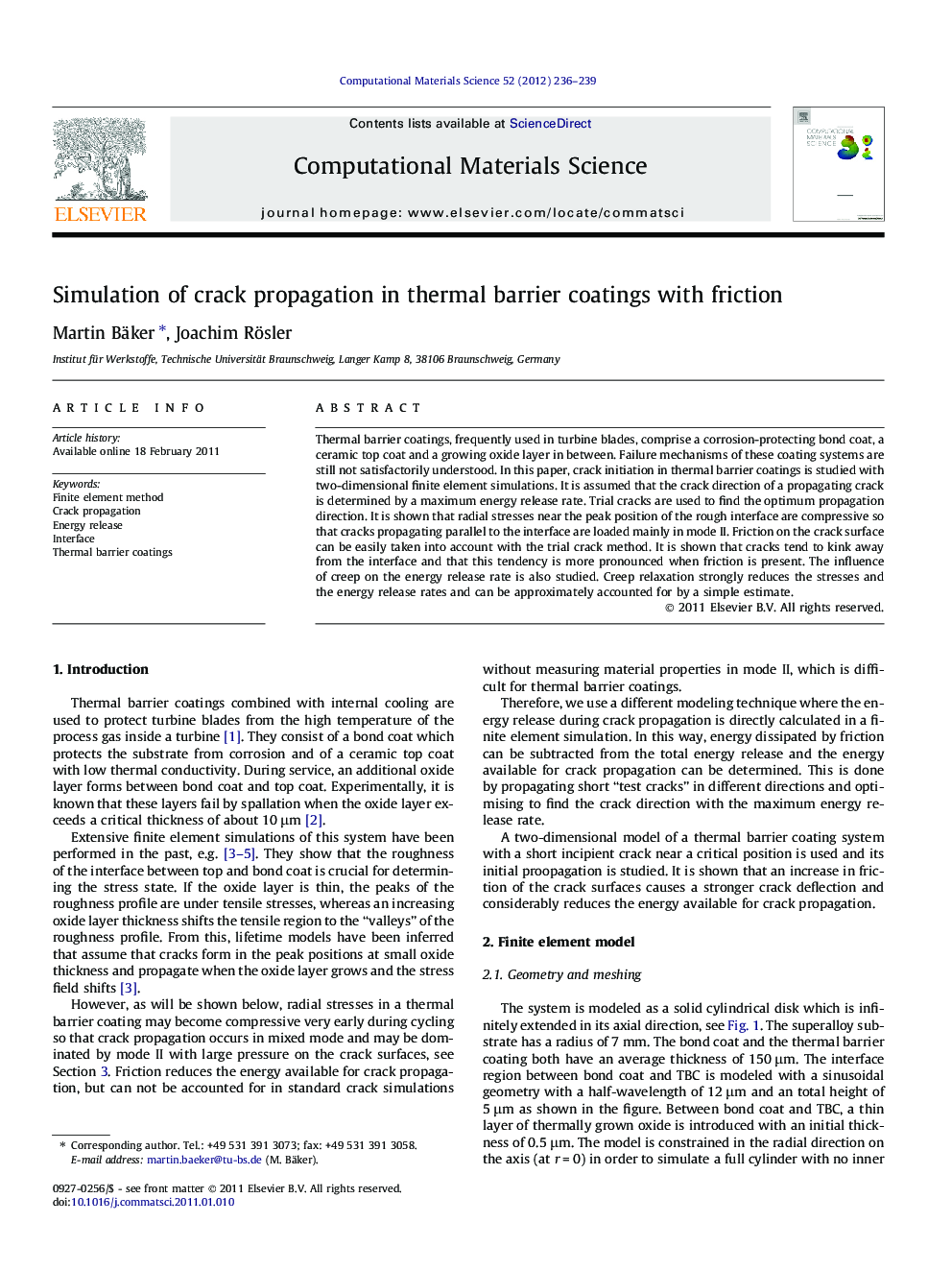| Article ID | Journal | Published Year | Pages | File Type |
|---|---|---|---|---|
| 1562078 | Computational Materials Science | 2012 | 4 Pages |
Thermal barrier coatings, frequently used in turbine blades, comprise a corrosion-protecting bond coat, a ceramic top coat and a growing oxide layer in between. Failure mechanisms of these coating systems are still not satisfactorily understood. In this paper, crack initiation in thermal barrier coatings is studied with two-dimensional finite element simulations. It is assumed that the crack direction of a propagating crack is determined by a maximum energy release rate. Trial cracks are used to find the optimum propagation direction. It is shown that radial stresses near the peak position of the rough interface are compressive so that cracks propagating parallel to the interface are loaded mainly in mode II. Friction on the crack surface can be easily taken into account with the trial crack method. It is shown that cracks tend to kink away from the interface and that this tendency is more pronounced when friction is present. The influence of creep on the energy release rate is also studied. Creep relaxation strongly reduces the stresses and the energy release rates and can be approximately accounted for by a simple estimate.
Research highlightsFinite element modeling of thermal barrier coating failure. Algorithm using dynamic crack propagation. Cracks propagate in mode II. Friction strongly inuences energy release and crack path. Creep relaxation strongly reduces energy release.
